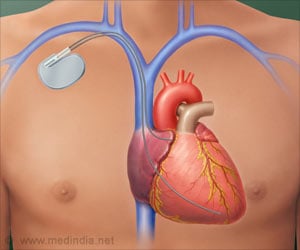A novel computer-based algorithm calculates risk of death for heart failure patients, say researchers.

"Doctors estimate the risk of heart failure patients in the emergency department based on best clinical judgment which may include different factors depending on their prior experience," says Dr. Douglas Lee, cardiologist in the Peter Munk Cardiac Centre, scientist at ICES and Associate Professor of Medicine at the University of Toronto.
"However, doctors may overestimate or underestimate the risk of death because the prognosis of heart failure patients may not be clearly apparent by a clinical assessment at the bedside."
"For those in very poor health or reasonably good health, physicians do a good job, but it's the middle group where the most improvement can be made. Some of these patients are dying at home or spending days in a hospital bed that they don't need to be in."
The lack of models that accurately predict a heart failure patient's risk of death and frequent misclassification of patients as high- or low-risk prompted Dr. Lee and his team to develop the "Emergency Heart Failure Mortality Risk Grade" (EHMRG), a risk model or algorithm using 10 simple predictors, including blood pressure, heart rate, and troponin levels, all of which are indicators of potential heart trouble. Each indicator is allocated a different weight in the algorithm based on the level of risk to the patient and the relative impact on the risk of death in the week following presentation to the ED, calculated as a percentage risk.
Prior studies have found that it may be safe for about 40 per cent of heart failure patients with cardiac symptoms to be discharged home from the ED; however one in every 11 discharged patients die within one week of coming to the ED. In the latter group, quality of care can be improved if appropriately discharged heart failure patients are assessed by their physician early after ED discharge to ensure that appropriate care is provided. Innovative programs of this type are being considered for implementation by the Peter Munk Cardiac Centre.
Advertisement
The next step is to develop web and smartphone applications so physicians can integrate the algorithm seamlessly into practice. With funding from the Peter Munk Cardiac Centre's Innovation Fund, Dr. Lee is developing smartphone and web-based applications that will assist with risk assessment, with a goal to collect data from individual physicians and hospitals, enabling comparisons between physicians and other centres, improving quality of care and influencing practice changes.
Source-Eurekalert














